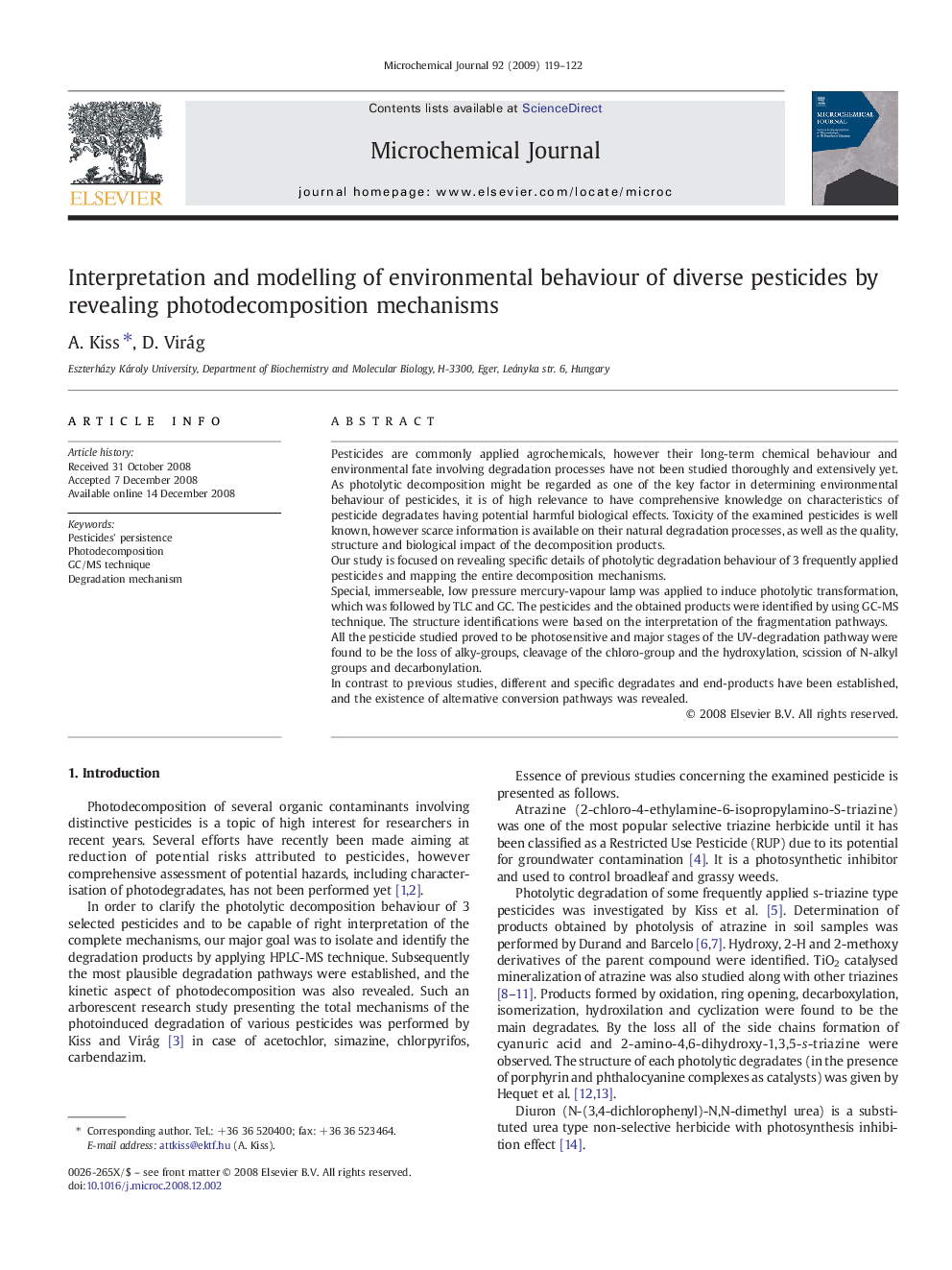| Article ID | Journal | Published Year | Pages | File Type |
|---|---|---|---|---|
| 1228003 | Microchemical Journal | 2009 | 4 Pages |
Pesticides are commonly applied agrochemicals, however their long-term chemical behaviour and environmental fate involving degradation processes have not been studied thoroughly and extensively yet. As photolytic decomposition might be regarded as one of the key factor in determining environmental behaviour of pesticides, it is of high relevance to have comprehensive knowledge on characteristics of pesticide degradates having potential harmful biological effects. Toxicity of the examined pesticides is well known, however scarce information is available on their natural degradation processes, as well as the quality, structure and biological impact of the decomposition products.Our study is focused on revealing specific details of photolytic degradation behaviour of 3 frequently applied pesticides and mapping the entire decomposition mechanisms.Special, immerseable, low pressure mercury-vapour lamp was applied to induce photolytic transformation, which was followed by TLC and GC. The pesticides and the obtained products were identified by using GC-MS technique. The structure identifications were based on the interpretation of the fragmentation pathways.All the pesticide studied proved to be photosensitive and major stages of the UV-degradation pathway were found to be the loss of alky-groups, cleavage of the chloro-group and the hydroxylation, scission of N-alkyl groups and decarbonylation.In contrast to previous studies, different and specific degradates and end-products have been established, and the existence of alternative conversion pathways was revealed.
